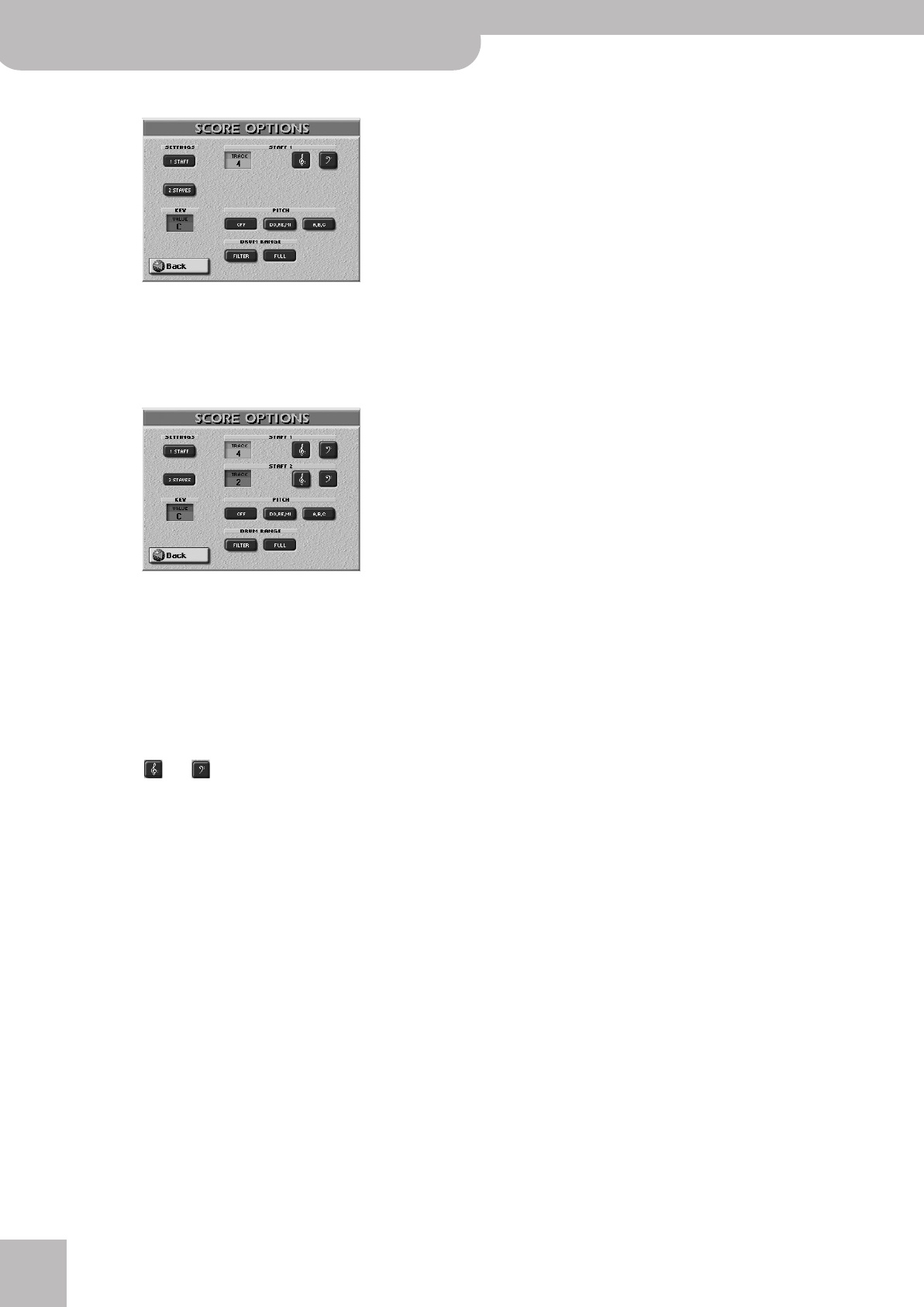
Quick Start
40
r
E-60/E-50 Music Workstation
(6) Press the [OPTIONS] button.
There are several things you can decide here:
• Do you want see the notes of one song part or of
two? If you only need one, activate [1¥STAFF]. To see
two parts, activate [2¥STAVES]. In the latter case, the
display changes to:
• Select the track(s) whose notes should be displayed:
Press the (corresponding) [TRACK] field and use the
[DATA÷ENTRY] dial to select the track.
“STAFF 1” is the upper staff, “STAFF 2” the lower one.
• If you happen to know the key your song is in, press
the [KEY] field and use the [DATA÷ENTRY] dial to
select the correct setting.
This is only necessary to avoid that the score is clut-
tered up with accidentals (sharps and flats).
• Use the and fields to specify what clef should
be used for displaying the notes. Press whichever is
more convenient for you (this setting has no effect
on the octave the notes are actually played in – it is
only used for display purposes).
• Use the button icons in the PITCH row to specify how
the note names should be displayed next to the note
symbols:
[OFF] means that the note names are not displayed;
[A,B,C] refers to the Anglo-Saxon/German/Dutch sys-
tem; while [DO,RE,MI] corresponds to the French/Ital-
ian system.
• Use the button icons in the DRUM RANGE row to
specify which notes of the drum track (usually track
10) should be displayed. [FILTER] means that you will
only see the notes between note numbers 35 and 59.
[FULL], on the other hand, means that you will see all
drum notes.
This setting is only used if you set (one of) the TRACK
field(s) to “10” or number of a track that plays a drum
part. Most drum parts only trigger MIDI notes
between numbers 35 and 59.
(7) Press [Back] to see the notes again.
If necessary, you can return to the OPTIONS page to
correct settings you don’t like after all.
E-60_50_OM_UK.book Page 40 Thursday, June 22, 2006 10:06 AM
